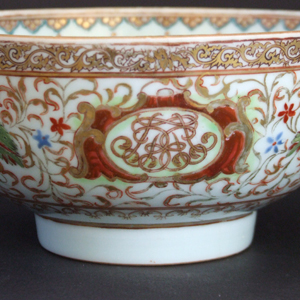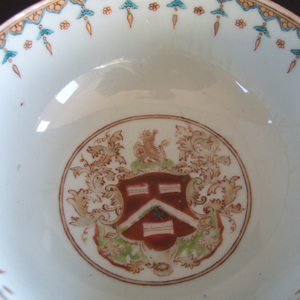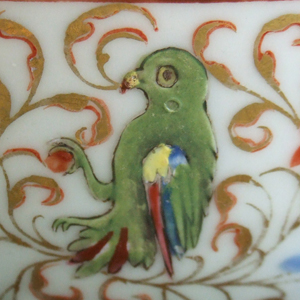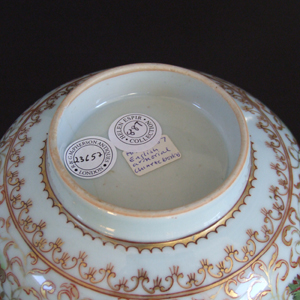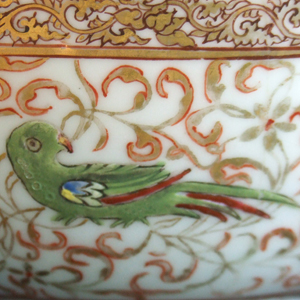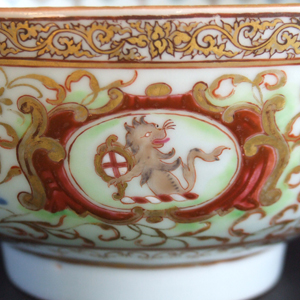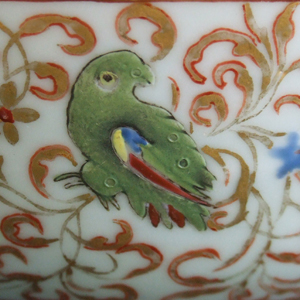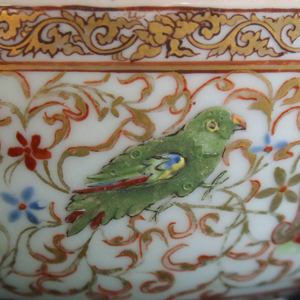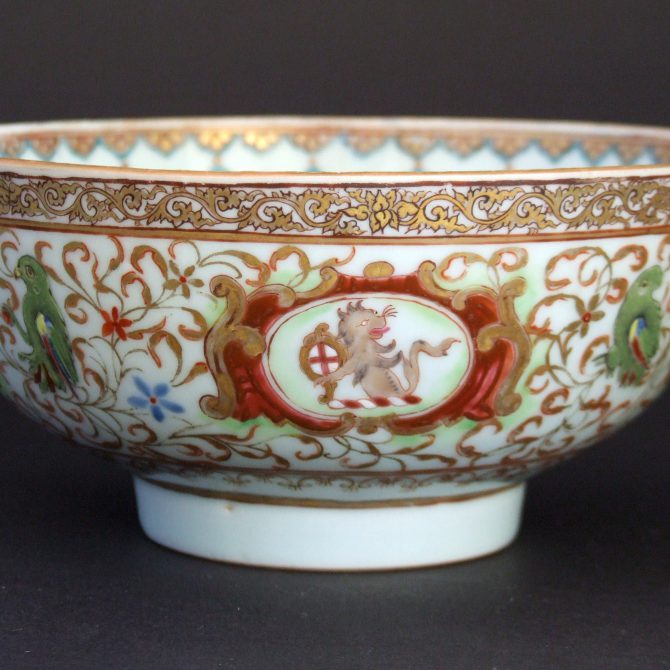
YONGZHENG or QIANLONG c.1730-1740 English Decorated Chinese Porcelain
A Yongzheng or Early Qianlong Porcelain Bowl c.1730-1740. The Decoration Probably Partly English of the 1730`s. Decorated with the Arms of the Bootle Family.
SOLD
- Condition
- Poor, a large section re-stuck, two fine but long cracks.
- Size
- Diameter : 15 cm (6 inches)
- Provenance
- R&G McPherson Antiques, 40 Kensington Church Street London. 8th December 2003. The Helen Espir Collection of European Decorated Chinese Export Porcelain : "a member of the Oriental Ceramic Society and collector, with her husband. Having made a typical collection of Song and provincial Ming blue and white, they decided to concentrate on what used to be called `clobbered` porcelain. She is the author of the standard work on the subject, European Decoration on Oriental Porcelain,2005, the first to examine the work of European decorators on Chinese porcelain throughout the eighteenth and nineteenth centuries, focusing on enamellers in Holland, Germany and England. She has learned Chinese." From Provenance ; Collectors, Dealers & Scholars : Chinese Ceramics in Britain & America (Roy Davids, Dominic Jellinek, Privately Printed, 2011. ISBN 978-0-9570148-0-0).
- Stock number
- 23657
Information
Bootle Family Armorial Services c.1730-40 :
Howard illustrates an oval dish from the Bootle family dated to c.1730 (Chinese Armorial Porcelain, David Sanctuary Howard,Faber and Faber,1974) on page 283. In the next volume, Chinese Armorial Porcelain Volume II (David Sanctuary Howard, Heirloom and Howard, 2003.ISBN 0-9544-389-0-6) pages 14 and 15 Howard compares the original Bootle service (dated to c.1730) with a Chinese replacement from c.1790 as well as an English soft-paste porcelain replacement from the Derby factory c.1787-1789. In the second volume he also shows two pieces from the service dated to c.1730, it is interesting that one piece is enamel on copper, this has a pale green diaper border as well as the scrolling ground with parrots. The plate he illustrates and the dish from the first volume have do not have a green border. The bowl from the Espir collection has a different border altogether. The Espir bowl has an external border of tightly painted gilt scrolling leaves with a brownish red outline. This appears to be Chinese decoration. All the pieces attributed to c.1730 have naively painted parrots in thick dull green enamel that has numerous burst bubbles. These together with the open scroll work, pendant chime border to the inner rim and the thick crimson red used on the arms appear very `un-Chinese` but they do relate to English decoration on Chinese porcelain. The large register of open scrolling on the Espir bowl is partly outlined in red, it is very different to the top border which is neat, controlled, and looks typical of Chinese painting of about 1730. The open scroll painting, parrots and probably the arms themselves appear to be English. The fact that the same service is found with two different borders, and also without a border, point to this service being created from different Chinese porcelain services and even a piece of Canton enamel as well. Helen Espir`s notes mention "Errol Manner, Robert McPherson agree that the armorials are probably English decoration and the borders Chinese, especially the inner border with the pendant chimes". She further notes "the thick green of the parrots are misfired, thick dark crimson enamel, do not look Chinese". We sold the Espir bowl as being partly English decorated in December 2003.
